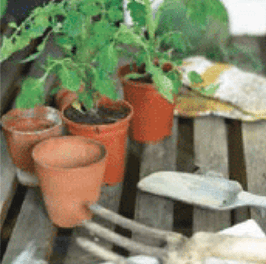
If a good soaking rain is not present every week to 10 days, water planted beds gently and slowly, long enough to allow 1 to 2 inches of water.
Beginning with this month, try to make an effort to mow the lawn often enough so you never have to cut off more than a third of the grass in order to maintain the recommended height.
Always keep your mower blades sharpened.
WEEK ONE
• Try to get all perennial plants into the ground before the hot weather sets in.
This will give your plants time to root and become ready for the long hot summer.
WEEK TWO
• Most vegetables and annuals can be planted this month.
Don’t wait too long to sow vegetables with a longer time to maturity, such as sweet corn or beans, or they may not fully mature before the fall frosts arrive.
Make sure the soil temperature is above 60 degrees when planting tomatoes and peppers.
• As azaleas finish blooming, clip or prune 2 to 3 inches off the branch tips that have finished flowering.
To lower an azalea or rhododendron that is getting too tall, prune no more than a third of the total plant mass.
To create a layered look, prune the bottom and side branches appropriately.
WEEK THREE
• When nighttime temperatures stay steady at 60 degrees Fahrenheit and above, start moving your houseplants outdoors.
Place them in indirect light in a sheltered spot for the first week. Check water requirements as air temperatures rise.
• To keep roses looking good and producing flowers, deadhead religiously, especially hybrid tea roses and grandifloras.
Always prune to down to a five-leaf segment, and cut at a 45-degree angle.
WEEK FOUR
1. Good plant growth is essential to the development of a healthy root system.
When planting new plants, use Espoma’s Bio-tone starter, which has living microbes that have been enhanced with humates and a synthetic nitrogen source.
If a good soaking rain is not present every week to 10 days, water planted beds gently and slowly, long enough to allow 1 to 2 inches of water.
2. Overgrown lilacs can be made new again by careful pruning. Immediately after flowering, identify the oldest canes or limbs and prune a third of them to the ground.
Removal of old limbs opens up the shrub to greater sunlight and will invite new shoots to rise up from the soil.
Continue to prune in this way each spring after flowering over the next three to four years.
This will renew your lilac to invigorate new healthy growth.
(Editor’s Note: Ken Morgan is the owner of Robin’s Nest Floral and Garden Center in Easton, Md.)




